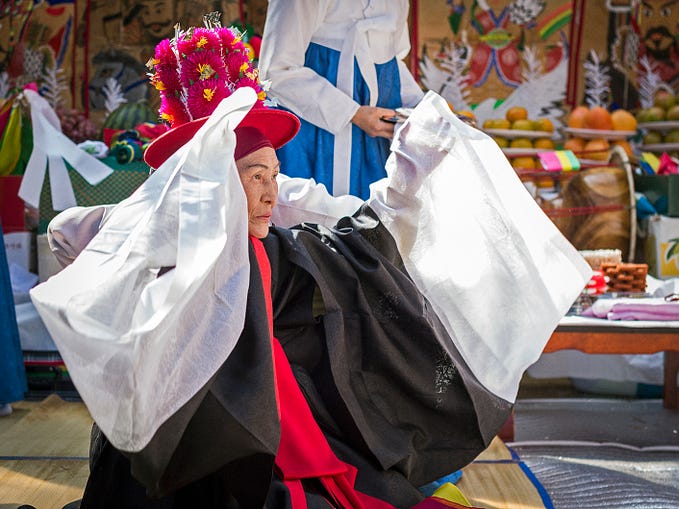
You think you know the story of European migration — but not like this
Launching today, Alison Killing’s immersive online documentary project migration trail lets you follow along in real time as two fictional characters make perilous 10-day journeys to Europe.
In late 2015, the shocking photograph of a toddler washed up on a beach in Turkey galvanized public attention on large numbers of migrants traveling to Europe, many by sea and under extremely risky conditions. Because of the surge in numbers of irregular travelers that year — more than 1 million — and the thousands of lives lost, media headlines at the time emblazoned the situation as a “crisis” in mainstream consciousness.
While the headlines have died down somewhat, large numbers of people are still steadily making their way in dangerous conditions from Syria, Afghanistan, Iraq, Nigeria and other countries, seeking to escape conflict, violence and poverty — and thousands continue to die. Meanwhile, the story also has a complex history going back at least 30 years, shaped in part by conflict in the Middle East, 1980s European border policies, and other factors that too often go unexamined.
Determined to give the European migration situation the historical depth, fuller context, and human intimacy it deserves, architect and documentary maker Alison Killing is taking a wholistic approach with migration trail, an online, immersive documentary project that makes innovative use of data, audio, maps and storytelling to more fully contextualize the individual journeys of two fictional migrants. Beginning today, their narratives will unfold in real time to anyone who tunes in. As Killing prepared to launch the project, she told us more.

When migration trail launches, you can access it from anywhere to follow the story of two fictional characters each taking a 10-day journey towards Europe. Their stories are told in real time, to convey urgency, as a live instant messaging feed that will appear on the website and in Facebook Messenger. At the start of the story, David, a 30-year-old from Nigeria, has traveled through Niger and Libya to get to the shores of the Mediterranean. His journey unfolds via the Central Mediterranean route from Libya and Italy, then up into France. The second character, Sarah, a 19-year-old Syrian girl from Turkey, travels via Greece towards Germany. Over the course of 10 days, their journeys will be charted in real time on a data visualization map. “If, for example, it takes five hours to get across from Rome to Milan in real life, it also takes five hours in the data visualization,” says Killing.
Meanwhile, anyone following along can zoom into the data visualization to get more detailed information about each character’s journey. “The more you zoom, the more the data becomes relevant to each character. Personal data might include how far they can continue to travel before their phone battery dies, or where they can get wifi, or how much fuel their boat has,” says Killing.
Zooming out reveals bigger-picture environmental data, such as wind velocity and direction. “This really important over the sea, because its effect on waves impacts the risk taken on each journey,” says Killing. “It also unveils social and political statistics that offer context for the individual stories. It includes such information as maps that show the success rate for Nigerians making asylum claims across various European countries, for example — or, say, how many refugees each European country has taken under the relocation program.”
Meanwhile, the fictional characters themselves will tell the stories of their own experiences, in first person — in the form of instant messages. As the character travels, audience members will follow the unfolding story via messages via Facebook on their phones and on their computers. “The message are written as if they were being sent to their best friend, boyfriend or family member. The audience will be getting these messages as the character travels and is sending them,” says Killing. To make it even more of an intimate experience, the messages will also be sent via Facebook Messenger. “You’ll be able to log in and get the messages coming to your phone.”
The messages were written by writers Elnathan John, from Nigeria, and Nadia Asfour, from Lebanon. “We had to work quite hard to understand how this experience would look and feel. An instant messaging feed is something that I think is reasonably well understood, but we still had to consider quite a lot of things — like the amount and type of messages that you need in order to tell the story. There’s a balance between too much and too little. If you have too much action, for example, it feels unrealistic. At the same time, if the Nigerian character isn’t seen for three days, he probably doesn’t have any phone reception. There’s a kind of gap in the story there which also would have felt unrealistic if we had filled up with messages.”

The two characters’ stories are a composite of the stories Killing had gathered during two and a half years of research on migration routes, where she interviewed people and gathered data. What was her starting point for choosing narratives? “When we started to think about the narratives that we wanted to tell, we started with the top ten countries of origin of people travelling to Europe in this way, and then whittled that down, trying to tell a diverse range of stories,” says Killing.
“There’s Syria, Iraq, Afghanistan, but also many places in West Africa and Sub-Saharan Africa. There are a lot of people coming from Nigeria, travelling through the central Mediterranean route, for example, as well as from Eritrea, Gambia, Senegal and Mali,” she says. “We wanted to have some variety in the routes they were taking, and to show what was going on in Greece and the Balkans.”
Not all the migrants are fleeing persecution, either. “A lot of the people making these journeys don’t have conflict they’re fleeing from. The 1951 convention definition for ‘refugee’ is that you have to be fleeing persecution, typically for political reasons, and you have to have crossed an international border. But we’re also telling the stories of some people who left their country because they just couldn’t make a decent living.”
“As the stories themselves show, these categories are far from clear cut. There are all sorts of deeper discussions about why people might choose to embark on this sort of journey and why they might choose to leave home for another country, in such a risky way,” says Killing.
To examine such issues in more depth, a documentary podcast will be released each evening of the journey, as the fictional narrative unfolds. “Each podcast follows the same narrative as the data visualization, so that if in the data visualization someone is arriving on Lesbos, then the podcast covers the situation in Lesbos,” says Killing.
“The podcasts serve two purposes. One is giving voice to the real people involved in this story, and foremost among that group are migrants themselves. We also talk to local government, volunteers, aid workers, border police, truck drivers, and so on, and academics and policy makers who can put it all into a wider context, such as the policies around borders and immigration that shape these experiences on the ground, and the history that has got us to this point.”
The podcasts also follow several migrants that Killing encountered on migration routes, collecting audio material over the course of two years, during which she met each person several times at different points in their journeys.
Some details of life as a migrant you may not have considered: for example, mobile phones are a crucial tool for connecting, finding your way around — and selfies. “Your phone is so central even if you’re at home, living quite a comfortable life. The idea of undertaking this really risky, very important journey and to not having a phone with you to help you stay in touch and figure out directions is almost unthinkable. It’s something that people prioritize.” Google maps is essential for finding out where you were going and where you were going next, as are Facebook groups, where smugglers advertise journeys. “We’ve got a section in the podcast that was talking about this smuggler offering eight different packages on Facebook to get people Turkey to Europe — kids under two travel free. One package didn’t involve any walking.”
When people arrived on the beach, the first thing they did was hack into the plastic packages they’d protected their phones in. “As soon as they could, they’d be calling home to tell people that they’d made it, calling middlemen to release money from the escrow account to the smuggler — and, most surprisingly, taking selfies. It’s a way people record what’s happening in their lives, so they’d be taking photographs on the beach of each other and themselves. Here we are, we made it!”
And what about power? “People were being resourceful about finding places to charge their phones. I learned all the places that have sockets in public buildings and down where they’re down corridors on ferries, for the cleaners. They’re hidden on top of automatic doors in train stations. At ports and at significant border crossings, teams of local people sell phone cards, so you’d always have a local SIM card that you could call and access the internet with.”

“Why don’t people just fly?” is a good question to ask, as it opens up the whole issue around visas and border control. It’s far cheaper to fly from Turkey to Germany than pay a smuggler thousands of dollars for a boat journey, so why are people getting on unseaworthy boats in the first place? “For refugees, crossing a border to seek asylum is permitted under international law, and it’s illegal to send someone back should they try,” says Killing. “The problem is that in order to claim asylum in any given country, you have to get there first, and you need a visa to board a flight or a ferry,” says Killing. “The airline will be fined and ordered to transport you back if they allow you to travel without a visa — and it can be incredibly difficult, time consuming, or unsafe to wait to get one. This means that people are forced to use smugglers instead.”
But these dangerous forms of travel are not at all necessary, says Killing. Countries could, for example, issue humanitarian visas that allowed people to travel safely by normal routes. “In the ’70s, for instance, people fleeing Iran did so by plane in many cases, but introducing fines for transport companies put an end to that,” she says. “The idea that as a refugee you have to travel in these risky, irregular ways has become so normalised that we don’t even question it any more,” says Killing. “It’s a way of keeping people out, and shunning a responsibility to help refugees and puts already vulnerable people in even more dangerous situations, when we should be trying to enhance their safety.”

The creation of the Schengen zone and a lack of immigration policies in Europe led to the start of people making these risky journeys to Europe. As Europe now fights over who takes responsibility for migrant populations, Killing points out that this history is the deeper heart of the situation that seldom gets aired. “Thirty years ago, the situation for migrants (including those coming to Europe for work, not only asylum seekers) was different,” she says. “In 1985, European countries made the Schengen Agreement, where they agreed to get rid of their internal borders — which meant that you wouldn’t have to show your passport as you crossed from France into Germany, for example.”
Shengen shifted the focus of European border policing to Europe’s external borders and visas were restricted, making it harder for people to travel from north Africa to Spain and Italy and back to do seasonal work in agriculture, Killing says. Once legal avenues for travel to Europe were shut down, people started arriving from North Africa in overcrowded, unseaworthy boats. “Europe’s border policies have directly contributed to the large numbers of people making risky journeys in recent years, whether that’s people fleeing war and seeking asylum, or those looking to make the decent living that they couldn’t make at home,” says Killing.
Meanwhile, she adds, there’s relatively little cooperation across Europe around asylum and immigration policy — so countries invest in border security such as walls, fences, drones, sensors, more border guards, in turn driving smugglers to charge higher fees for more difficult border crossings. “Journeys become riskier for the people making them, but more security doesn’t stop people migrating,” says Killing.

Ultimately, the migration trail platform might become a way to track the evolution of the migration issue — and help examine the deeper reasons behind the immediate problem. “With this project we have two aims. One is about creating a better-informed discussion about migration in Europe. Then we want to show that you can tell really compelling stories using maps and data. I think it can be a really powerful way of telling a story.”
Meanwhile, the story keeps moving as people move and situations change. “The story of irregular migration to Europe has shifted so much over the past three years,” says Killing. “When I started doing this project, a lot of people were travelling from Egypt to Italy, for example. I was just getting started, and suddenly everything opened along the Balkan route. The central Mediterranean has kind of stayed stable, but more people are travelling through Spain again as well.”
“It would be great to continue to develop it, maybe even using the platform we’ve built to tell other stories, whether it’s fiction or following a round-the-world yacht race or wildebeest migrating in the Serengeti or the opening of the North West passage — anything that involves change over a geographical area,” she says. “Certainly, as things continue to shift, I think migration trail can continue to do a deeper dive into the European migration situation, and tell the stories that are seldom told.”
It’s important not to become inured to the shocking levels of violence still suffered by migrants. “I saw a good infographic a few months ago showing the number of deaths of people trying to cross the Mediterranean this year — 2,808 at the start of November, according to UNHCR — in terms of how many planes’ worth of people that would be. It would be 13 Boeing 737s,” says Killing.
“If that many planes had crashed in the Mediterranean this year, killing all of their passengers, there would be uproar. With refugees somehow we’re willing to accept large numbers of deaths as normal,” she says. “Almost 1 in every 50 people making the crossing in the Mediterranean died this year. it’s also important to point out that these are only the deaths we know about.”
migration trail launches on 20 November 2017. Visit www.migrationtrail.com to get the full experience: data visualisation, maps, message feeds and podcast. Find migration trail on Facebook www.facebook.com/migrationtrail. To sign up for the Facebook instant message feed, you may also go directly to the project’s Facebook Messenger, sign up by clicking “get started,” and then following the instructions.

The TED Fellows program hand-picks young innovators from around the world to raise international awareness of their work and maximize their impact.











